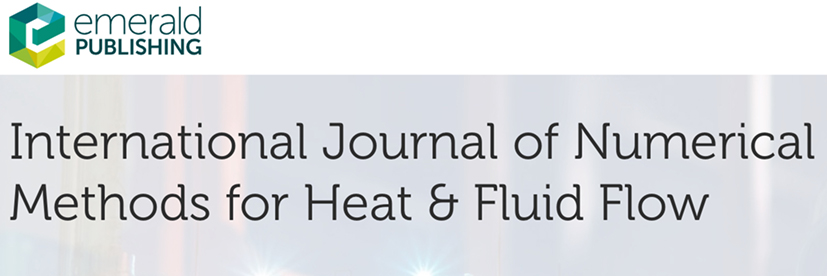ISSN (print): 0961-5539
ISSN (online): 1758-6585
Nov
2020
May
2021
Heat and fluid flow has an ability to deal with technological based systems and generally covers a wide variety of fundamental studies, theoretical mathematical modeling, numerical and experimental investigations relating to conduction, convection, condensation, boiling and radiation in systems, processes, materials and many other related objects. This issue invites you to present your latest original research findings which are either advances in the state-of-the-art of mathematical methods, theoretical studies, or experimental studies that extend the bounds of existing methodologies to new contributions addressing current challenges and engineering problems related to increasing or decreasing the heat transfer distribution. We hope that this issue will serve as a platform for innovation and will provide up-to-date findings to readers and the scientific community.
Indicative list of anticipated themes: Thermal management: Convection, conduction, radiation, heat transfer enhancement with micro- and nanofluids, nanoparticles and their shapes; Fluid dynamics: Non-Newtonian fluids, Multiphase flows, combinations of MHD, slip; Heat and mass transfer in thermal energy; porous media; biological systems; Advances in numerical methods (FVM, FEM, FDM, LBM, DSMC, MD, etc.); Hybrids numerical methods; Validation, verification, and uncertainty quantification of commercial as well as open source software; Application of numerical modeling in biomedical and industrial engineering.
New Trends in Heat and Fluid Flow | Applications and Recent Developments
Heat and fluid flow has an ability to deal with technological based systems and generally covers a wide variety of fundamental studies, theoretical mathematical modeling, numerical and experimental investigations relating to conduction, convection, condensation, boiling and radiation in systems, processes, materials and many other related objects. This issue invites you to present your latest original research findings which are either advances in the state-of-the-art of mathematical methods, theoretical studies, or experimental studies that extend the bounds of existing methodologies to new contributions addressing current challenges and engineering problems related to increasing or decreasing the heat transfer distribution. We hope that this issue will serve as a platform for innovation and will provide up-to-date findings to readers and the scientific community.
Indicative list of anticipated themes: Thermal management: Convection, conduction, radiation, heat transfer enhancement with micro- and nanofluids, nanoparticles and their shapes; Fluid dynamics: Non-Newtonian fluids, Multiphase flows, combinations of MHD, slip; Heat and mass transfer in thermal energy; porous media; biological systems; Advances in numerical methods (FVM, FEM, FDM, LBM, DSMC, MD, etc.); Hybrids numerical methods; Validation, verification, and uncertainty quantification of commercial as well as open source software; Application of numerical modeling in biomedical and industrial engineering.
Academic Source Complete, Applied Mechanics Review, Boundary Element Abstracts, Cabell’s Directory of Publishing Opportunities in Mathematics, Chemical Abstracts, CSA ASFA-2 – Ocean Technology, Policy & Non Living Resources Abstracts, CSA Health & Safety Science Abstracts, EBSCO, EI Compendex, Fluid Abstracts, INSPEC, International Civil Engineering Abstracts, Mathematical Reviews, QUALIS, ReadCube Discover, TOC Premier, Zentralblatt MATH, Norwegian Register for Scientific Journals, Science Citation Index Expanded SCIE (Clarivate Analytics), Scopus.
Info at: www.emeraldgrouppublishing.com/services/authors/publish-us/publish-open-access/journal#apc-charge
Guest Editor
Rahmat Ellahi









